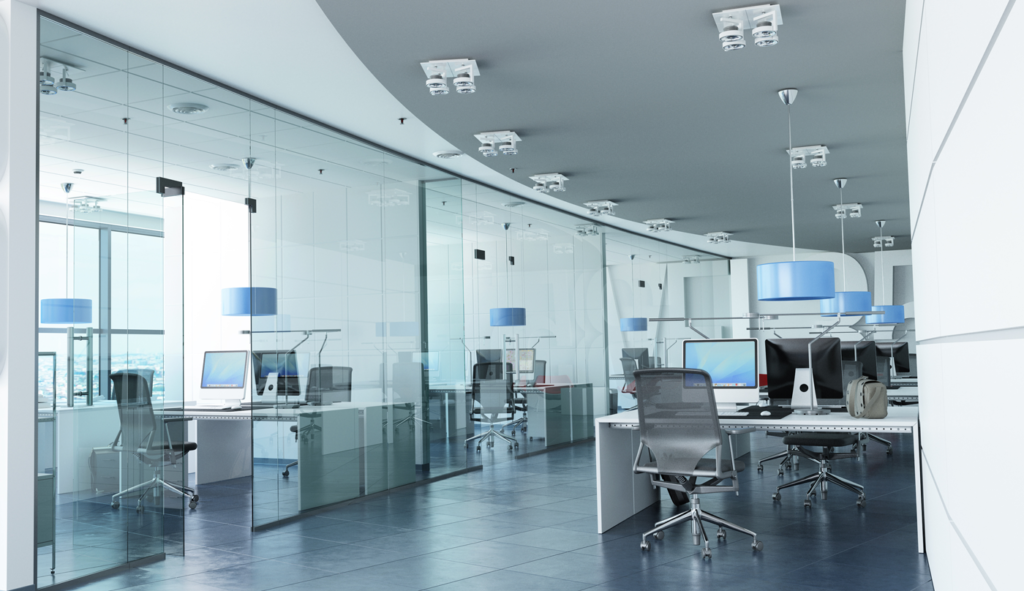How to Use Glass Demountable Walls in Office Design in Houston
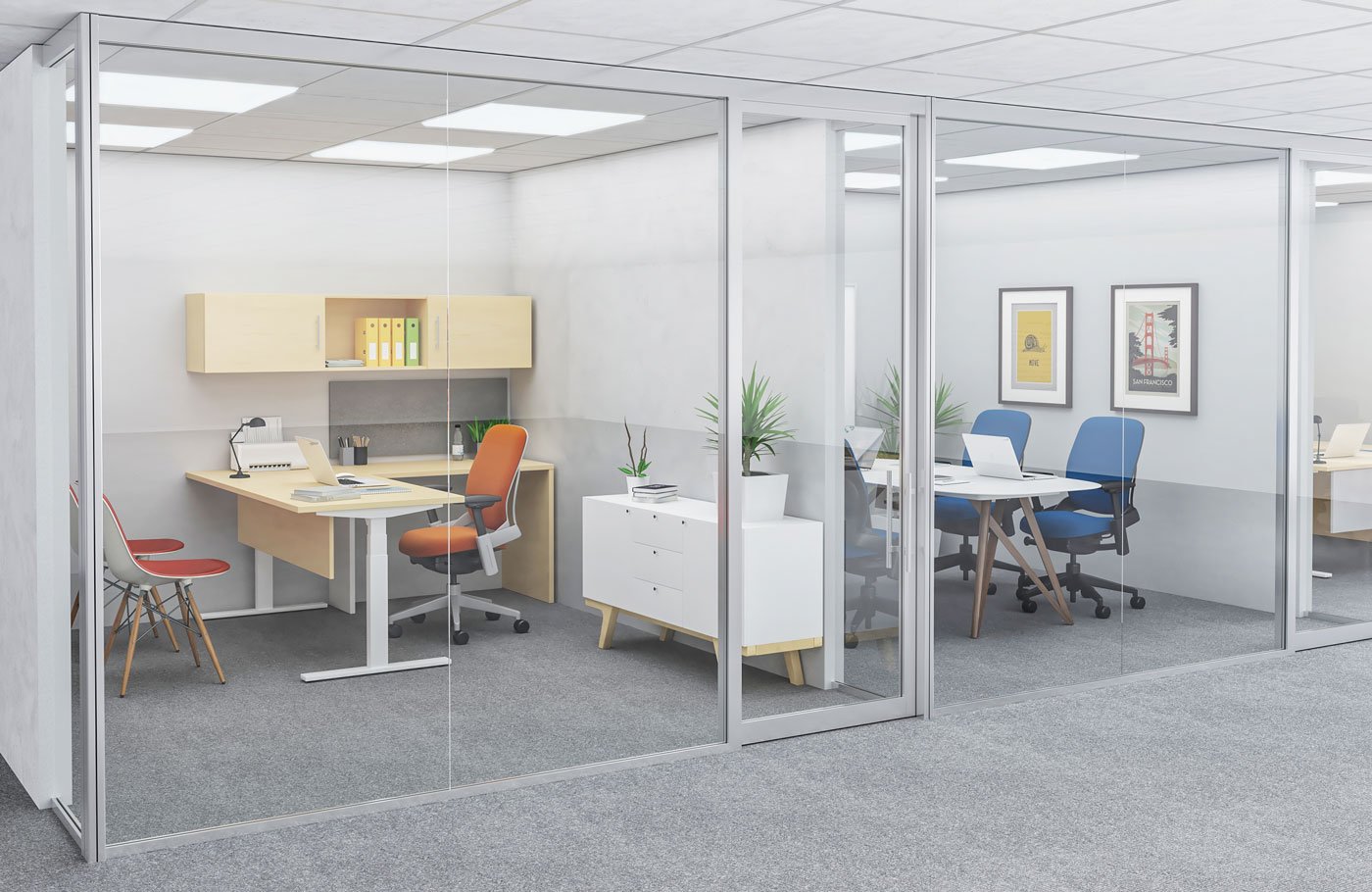
Modern office floor plans are rarely static.
Changing business needs, personnel shifts, and various other factors contribute to moves, adds, and changes (MACs).
What is working well this year may not work next year.
Demountable walls support fast and cost-effective reconfiguration to accommodate these changes with a minimum of disruption, and they fit perfectly into mixed-use design concepts.
Now the question is: How to use glass demountable walls in office design in Houston?
To use glass demountable walls in office design in Houston, focus on creating open, airy spaces while maintaining privacy where needed. Glass partitions can divide departments or workstations while allowing light flow, fostering collaboration without feeling enclosed. Ensure you incorporate soundproofing materials if noise is a concern, and choose tinted or frosted glass for added privacy in certain areas like meeting rooms.
Remember when the open plan was all the rage?
Large open spaces, few enclosed offices?
Interior walls were almost nonexistent.
While the open plan was great at encouraging and enabling teamwork and collaboration, it had a very adverse effect on concentration, focus, and the occasional need for privacy and confidentiality.
With these pros and cons in mind, mixed-use or varied-use design concepts evolved, allowing for the best of both the old and the new world.
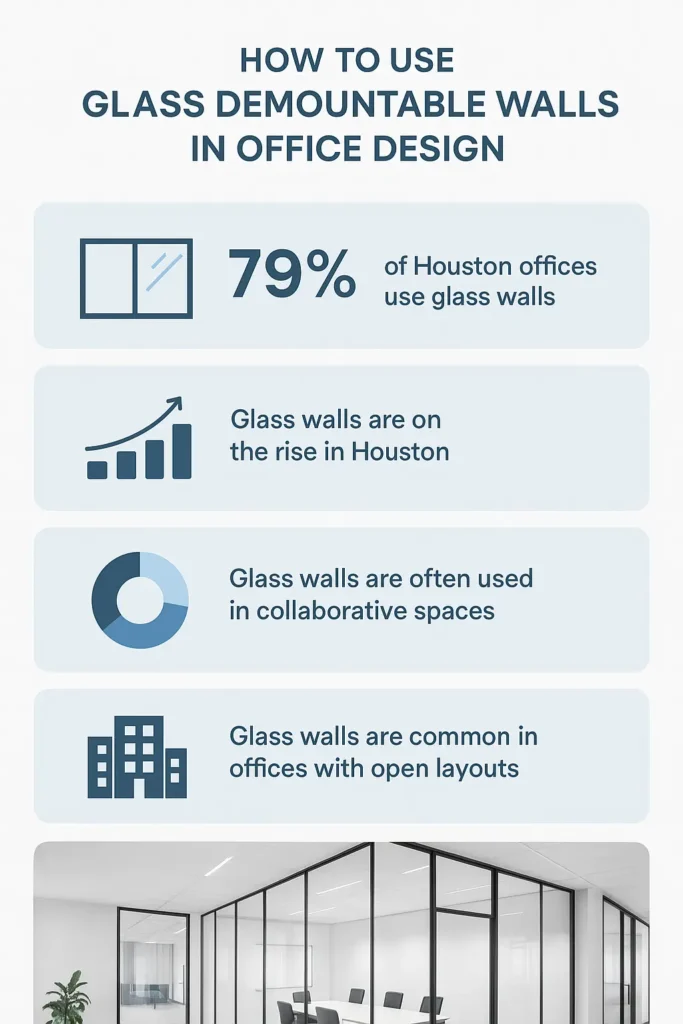
You Might Also Enjoy: Demountable Walls Vs Drywall: Ultimate Guide [2025]
What Are Glass Demountable Walls?
Glass Demountable Walls are a type of wall made of glass and designed in such a way that they can be easily installed, moved, and reinstalled without the need for demolition or structural changes to the building.
These walls are commonly used in modern office spaces and have become a popular choice for designing workspaces due to their special features.
These demountable glass walls have features that include:
- Flexibility: These walls are easily removable and adjustable, so they can easily adapt to the changing needs of office spaces.
- Transparency: One of the outstanding features of glass demountable walls is that they transmit natural light into the space, creating a brighter and more open space.
- Reusability: Demountable glass walls are designed so that they can be reassembled after installation and installed in another location.
This feature makes these walls a cost-effective option for office projects with high variability, as they can be used in a variety of projects.
 Inspiration
Inspiration
Many of the concepts involve a little creativity. Encourage collaboration by allowing it to be a choice. Why not design specific areas for employees to gather in an inviting and relaxed setting when collaboration is needed? And, smaller concentration areas where a single employee can migrate when solitude is required?
Benefits of Glass Demountable Walls in Office Design
- Enhancing Natural Light and Visibility: Glass walls diffuse natural light throughout the office space, creating a bright and open environment.
Natural light both reduces energy consumption for artificial lighting and improves employee morale and productivity.
The transparency of the walls also makes the office space appear larger and more open, reducing the feeling of restriction in work environments.
- Increased Flexibility and Adaptability: One of the most important advantages of demountable glass walls is their flexibility in office space design.
Using these walls, office space planning can be changed without the need for demolition or reconstruction.
For example, these demountable walls can be easily removed if a team grows or new private spaces need to be created.
- Improved Acoustic Performance: By using the right glass and equipping it with soundproofing frames and materials, demountable glass walls can provide good acoustic performance in offices.
These demountable walls can reduce ambient noise and provide a quieter environment for meetings, phone calls, and employee focus.
In modern designs, double or triple glazing and acoustic coatings can be used to increase acoustic efficiency.
- Aesthetic Appeal: The clear and clean design of these glass walls increases the attractiveness of the work environment and can have a positive impact on customers and visitors.
These walls also allow for coordination with other interior decoration elements such as Houston office furniture, lighting, and office equipment.
Glass Demountable Wall Uses
Some of the more obvious solutions are private offices for those who handle confidential materials or separate conference rooms of various sizes, which will allow for private meetings and phone calls.
Clear or frosted glass walls allow light to filter through but also stifle the echoing sounds of typing, chatter, and general shuffling about in the workplace.
Increasingly compatible demountable wall systems are available in the marketplace to help you meet these goals and provide the ability to reconfigure on the fly as your business needs evolve.
Below are our design tips for using demountable walls to their greatest mixed-use potential.
You Might Also Enjoy: Why You Need Demountable Walls in Your Office
Design Tips for Supporting Varied Workplace Activities
In business, the ability to adapt is imperative to survival, but adaptability doesn’t only apply to internal processes and revenue models. Employees need an office environment that enhances their agility and promotes synergy around varied workplace activities. Check out these interior design tips to help create an evolutionary office space that will secure your future success:
Reimagine how workspaces are separated
Divisions don’t have to be walls. Incorporate glass surfaces, like demountable walls, to open up the space, keeping employees visually connected without converting entirely to an open floor plan (which may not suit all activities). Use sound-absorbing materials to keep collaborative spaces from impeding quiet areas. Or, build green walls to purify the air, reduce ambient noise, and increase the feeling of well-being.
Make office spaces customizable on demand
Use modular, demountable walls Houston and furniture that can be moved and reconfigured to support different activities or employee needs. Best of all, these systems are easily reconfigured with your office demands, and the investments go with you if you change office locations, including the walls!
Consider non-dedicated workstations instead of assigned offices and office cubicles
Non-dedicated workspaces provide more freedom to develop a variety of work areas. For example, quiet focus rooms, community office tables, standing office desks, and collaboration spaces mean employees can work from anywhere. They’ll have the ability to tailor their placement depending on the activities they need to complete that day. To create fairness and avoid conflict, use a scheduling tool that allows employees to reserve specific spaces in advance.
You Might Also Enjoy: Movable Walls Are Disrupting Office Design
Design for Various Meeting Sizes and Types
Enclosed rooms should be provided to support groups of different sizes. But if open and informal meeting spaces are also used, be sure they are adequately separated from individual quiet spaces with sound-absorbing materials. In addition, providing visual display technologies such as projectors or flat screens and writing surfaces, such as whiteboards, will allow for versatility and collaborative work. Depending on the actual work performed in the office, consider providing dedicated project rooms for collaborative work.
Support Individual Focus and Concentration
Providing spaces for focus and concentration is imperative. If open spaces like pods or bullpens are being used, be sure to include aesthetically pleasing, acoustically conditioned rooms as needed.
Locating concentration booths near workspaces will encourage their use as they will be more readily available and will reduce the nonproductive time it would take to walk further to find one. Consider zoning space for a variety of both quiet and interactive needs.
Support Stress Reduction and Relaxation
Consider creating spaces for relaxation and playfulness beyond your standard break room. This can include an exercise room, lounge, TV, pool, or foosball table. Group and social events in this setting may work, as well. Incorporate comfort furniture, wall treatments, and lighting (natural lighting if possible).
Use environmentally responsible furnishings and materials in the spaces intended for relaxation and stress reduction. If possible, allow views of nature or provide images of nature scenes.
 Enable Informal Social Interaction
Enable Informal Social Interaction
Provide multiple places to meet and greet (collision spaces). These are informal workspaces in hallways, cafeterias, sitting areas, and other spaces that can be easily furnished and reconfigured. When implementing cafes and coffee nooks, remember to station them in central areas along well-traveled paths to encourage use and interaction. Also, design workflow circulation with informal communication opportunities in mind.
Throw away the cookie cutters
The shifting nature of work in the office means greater needs for mobility. With increased pressure, companies must consider how to provide for these needs and behaviors in a lean and agile way.
- A variety of workspaces within and outside of buildings
- Greater use of geographically scattered groups
- More dependence on social networks
Designers highlight that individual design plans will vary a lot by the company and even by department. For example, quiet and concentrated professions like accounting or writing will have very different needs compared to sales and human resources.
Workplaces have answered with many new and innovative options, including more team space and casual interaction spaces, supporting virtual, individual, and group work, more attention to integrating education into the everyday work experience, greater flexibility in physical work locations, and more focus on suiting the workplace to the work rather than forcing the work to match the workplace.
Conclusion
Glass demountable walls are one of the most innovative solutions in modern office design.
These types of walls, with features such as high flexibility, natural light transmission, improved acoustic performance, and visual appeal, have been able to be a smart alternative to traditional walls.
In a city like Houston, where the need for dynamic, bright, and efficient workspaces is increasing day by day, the use of demountable walls can play an important role in improving employee productivity and creating a modern and professional environment.
Also, the ability to move and reuse these walls allows companies to save significantly on renovation costs and time.
If you are looking to create a more open, flexible, and adaptable space to meet the changing needs of work environments, choosing demountable glass walls could be the best decision for the future of your office.

John Ofield is the owner of Collaborative Office Interiors. Houston’s trusted source for modern and commercial office furniture, office cubicles, demountable walls, office desks and tables, and complete workspace solutions. With more than 40 years of experience, he combines deep product knowledge with hands-on space-planning expertise to create ergonomic, productivity-focused work environments for businesses across Southeast Texas.


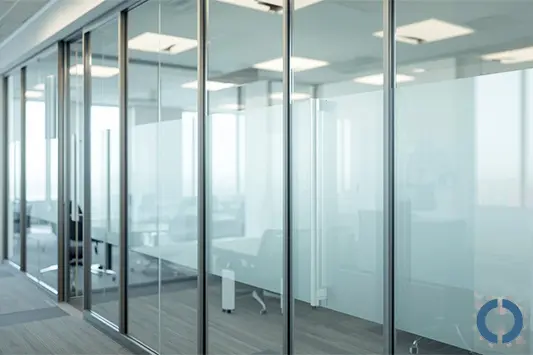
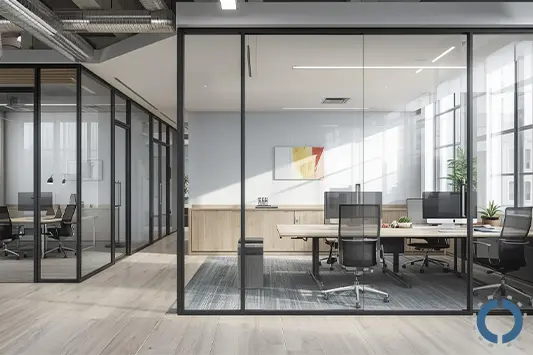 Enable Informal Social Interaction
Enable Informal Social Interaction
